October 2019: The Month in Review

Following a third quarter that featured the first animal-free dairy ice cream and the establishment of the first cell-based meat coalition, October marked a strong start to the fourth quarter for cellular agriculture. Cellular agriculture (cell ag) is the field of producing animal products, like meat or dairy products, from cell cultures directly instead of raising animals for the same products. Compared to conventional livestock agriculture, cell ag provides a more sustainable and environmentally-friendly way to produce animal products to meet the growing demand for animal products.
This month, cellular agriculture went to new heights to illustrate its potential to impact our current food system. At the same time, other events highlight the challenges the field continues to face. From new investments and deals to new frontiers, this article takes a look at what happened this October in cellular agriculture.
Investments
Future Meat Technologies
Future Meat Technologies announced that the startup raised $14 million to complete their Series A financing. Based in Israel, Future Meat Technologies is a startup that uses cellular agriculture to grow cell-based meat. Future Meat’s funding round was co-led by S2G Ventures and Emerald Technology Ventures. Other investors in the round included Monde Nissin, Tyson Ventures, Bits x Bites, and Manta Ray Ventures.
Future Meat Technology plans to use their new round of funding to develop their cultured meat pilot production facility south of Tel Aviv. They aim to have it operating in 2020. Future Meat initially plans to launch a cost-competitive hybrid product (plant-based protein, and cell-cultured fat) from their pilot plant in 2021. By 2022, Future Meat aims to launch a line of 100% cell-based meat products at the cost of less than $10 per pound.
The round brings Future Meat’s total funding to $16.2 million. In May 2018, Future Meat raised $2.2 million in seed funding.
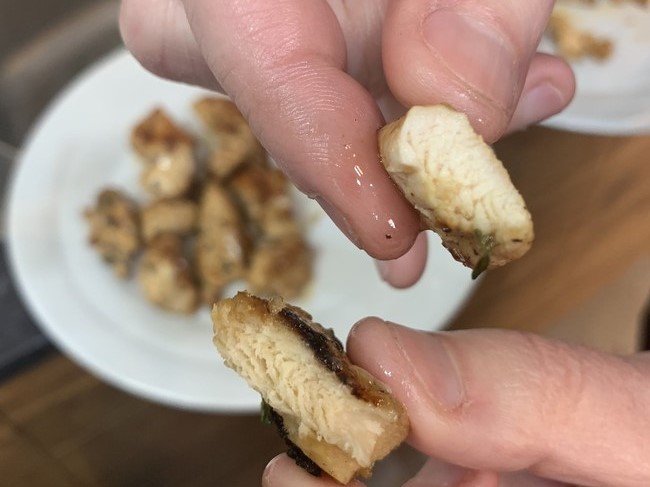
Future Meat Technologies’ cell-based chicken meat (bottom) compared to conventional chicken meat (top)
Wild Type
Wild Type announced that they raised $12.5 million in Series A funding. Wild Type is a startup in San Francisco, California that uses cellular agriculture to grow cell-based seafood, specifically salmon. Wild Type’s round of funding was led by by CRV, a venture capital firm that previously invested in DoorDash. Other investors in the round include Maven Ventures and seed round investors Spark Capital and Root Ventures.
The funding round continues Wild Type’s great year. In June 2019, Wild Type made history by showcasing the first ever cell-based salmon dinner in Portland, Oregon. From salmon tartare to salmon ceviche to salmon sushi rolls, Wild Type displayed that cell-based salmon can be as versatile as conventional salmon. Without requiring any animals.

Wild Type’s cell-based salmon
Interestingly, Wild Type is the first cell-based seafood startup to announce their Series A round of funding. The startup plans to use their round of funding to accelerate the development of their cell-based salmon. They plan to focus on developing a delicious product as well as aim to further expand their capabilities to scale production.
The funding rounds brings Wild Type’s total funding to $16 million. Wild Type previously raised $3.5 million in their seed round in March 2018.
Cell-based Meat Goes to Space
Cellular agriculture went to a new frontier. Outer space.
Aleph Farms announced that they successfully grew the first piece of cell-based meat in outer space on the International Space Station. 248 miles above earth. Based in Israel, Aleph Farms is a startup that uses cellular agriculture to grow cell-based meat, specifically steak.
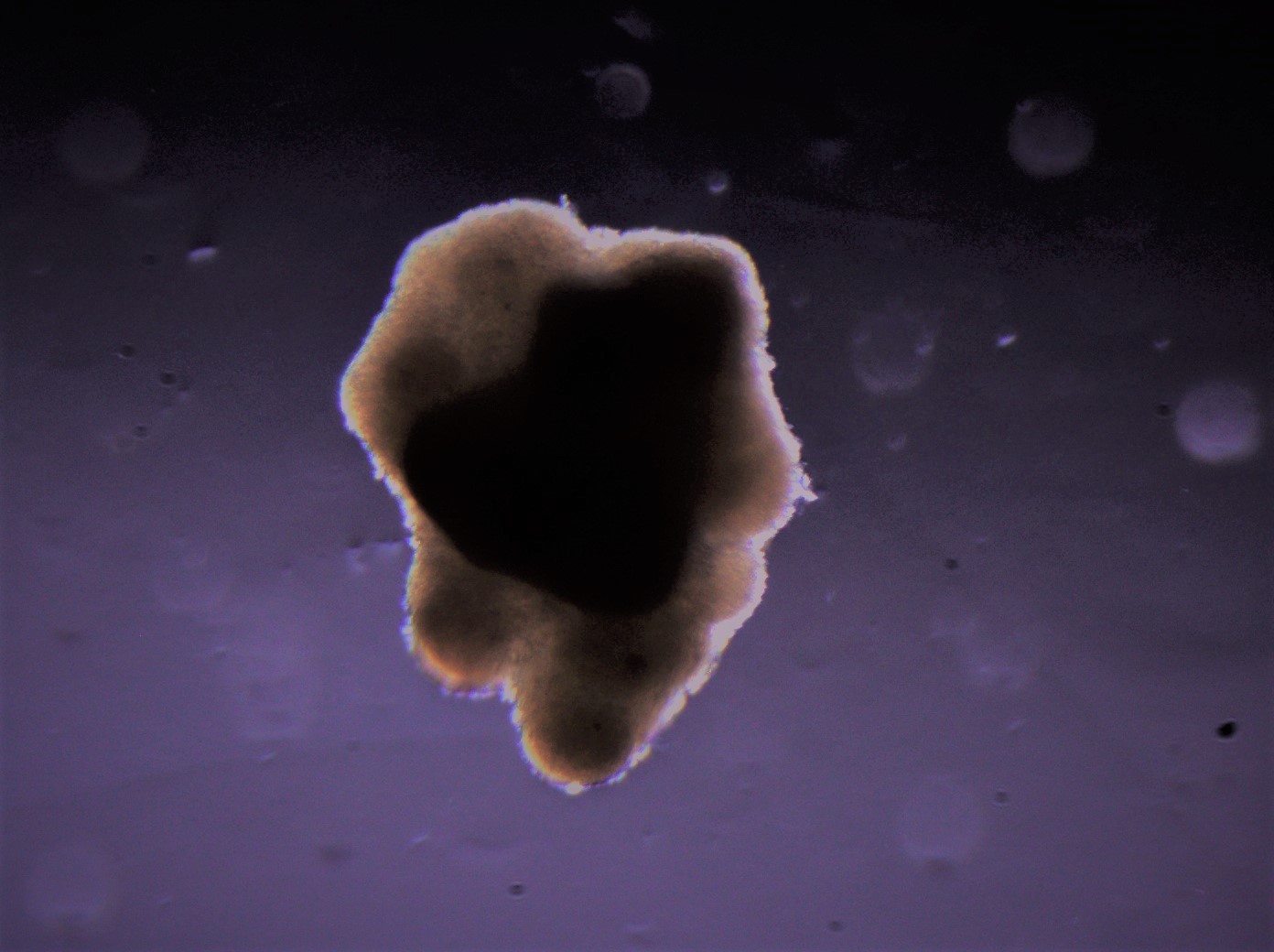
The successful experiment was a joint project between Aleph Farms, 3D Bioprinting Solutions, Meal Source Technologies, and Finless Foods. 3D Bioprinting Solutions, a Russian company exploring innovative uses for bioprinters, led the experiment as they developed the 3D bioprinter on the Russian segment of the International Space Station. 3D Bioprinting Solutions’ bioprinter can assemble small-scale muscle tissue under micro-gravity conditions.
Using this technology, Aleph Farms provided the bovine cell culture sample that became the first cell-based beef grown on the International Space Station in outer space. Finless Foods and Meal Source Technologies also provided cell culture samples to grow in outer space. Meal Source Technologies is a newly founded subsidiary of Vivax Bio focused on bioprinting applications in cellular agriculture.
The first piece of space cell-based meat was brought down to earth on the Soyuz MS-12 descent module. Aleph Farms will now study how their cell-based meat grew in space compared to their meats on earth.
Geltor Partners for Collagen Supplements

Geltor announced a partnership with collagen company GELITA. Based in San Leandro, California, Geltor uses cellular agriculture to grow animal-free collagen protein. Traditionally, collagen is sourced from bones and skin of livestock animals or fish, and Geltor’s collagen via cellular agriculture offers an alternative and sustainable way to get the same product
GELITA is a leading global collagen protein company. On October 17th, Geltor and GELITA signed a letter of intent to develop, produce, and market the first ingestible animal-free collagen proteins. According to the agreement, Geltor will design and produce premium biodesigned collagen and GELITA will conduct clinical research and commercialize the product as one of its portfolio products. Specifically, the two companies plan to develop dietary supplements using animal-free collage. They aim to launch in late 2020.
This is not GELITA’s first experience working with companies in the alternative protein space. GELITA previously invested in Geltor’s $18.2 million Series A round of funding in October 2018. It’s also interesting to note that Geltor and GELITA’s partnership does not limit Geltor from working with other partners to develop other animal-free collagen food products beyond supplements.
Avant Meat Showcases First Cell-Based Fish Maw
Founded by Carrie Chan and Mario Chin, Avant Meats is a cell-based seafood startup based in Hong Kong. And this month, Avant Meats showcased the first ever cell-based fish maw product. Fish maw is the dried swim bladder of large fish, a popular dish in China and Southeast Asian cuisine. Avant Meats’ accomplishment highlights how cell ag can be used to develop a diverse range of products to help meet consumer demands in various cuisines across cultures.
The cell-based fish maw showcase is the third cell-based seafood prototype this year after Wild Type and Shiok Meats. In March, Shiok Meats showcased the first cell-based shrimp dumpling in Singapore.
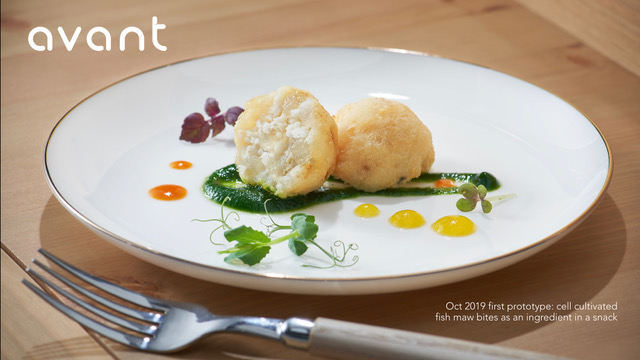
The Real MEAT Act reaches US Congress
A bill was recently introduced in the US federal government called the Real Marketing Edible Artificials Truthfully Act. For short, the Real MEAT Act.
Introduced to the House of Representatives, the Real MEAT Act will narrow the definition of meat to prevent both cellular agriculture and plant-based companies from calling their products meat. According to the bill, all cell-cultured and plant-based meat products will have to be labeled as imitation meat.
Groups like the US Cattlemen’s Association (USCA) will claim this legislation as a win. In February 2018, the USCA filed a petition with the US Department of Agriculture (USDA) to narrow the definition of meat. In the petition, the USCA requested that meat be defined as coming from the flesh of an animal that has been raised, slaughtered, and harvested in the ‘traditional’ manner. That is exactly how the Real MEAT Act defines meat.
If the bill proceeds, it will be interesting to see what the regulatory stance will mean for the future of cellular agriculture in the US. Regulation has been an obstacle for the field moving forward. In March, the US regulatory agencies established a basic framework for regulating cell-cultured meat products.
In other words, the fight for the word meat continues.
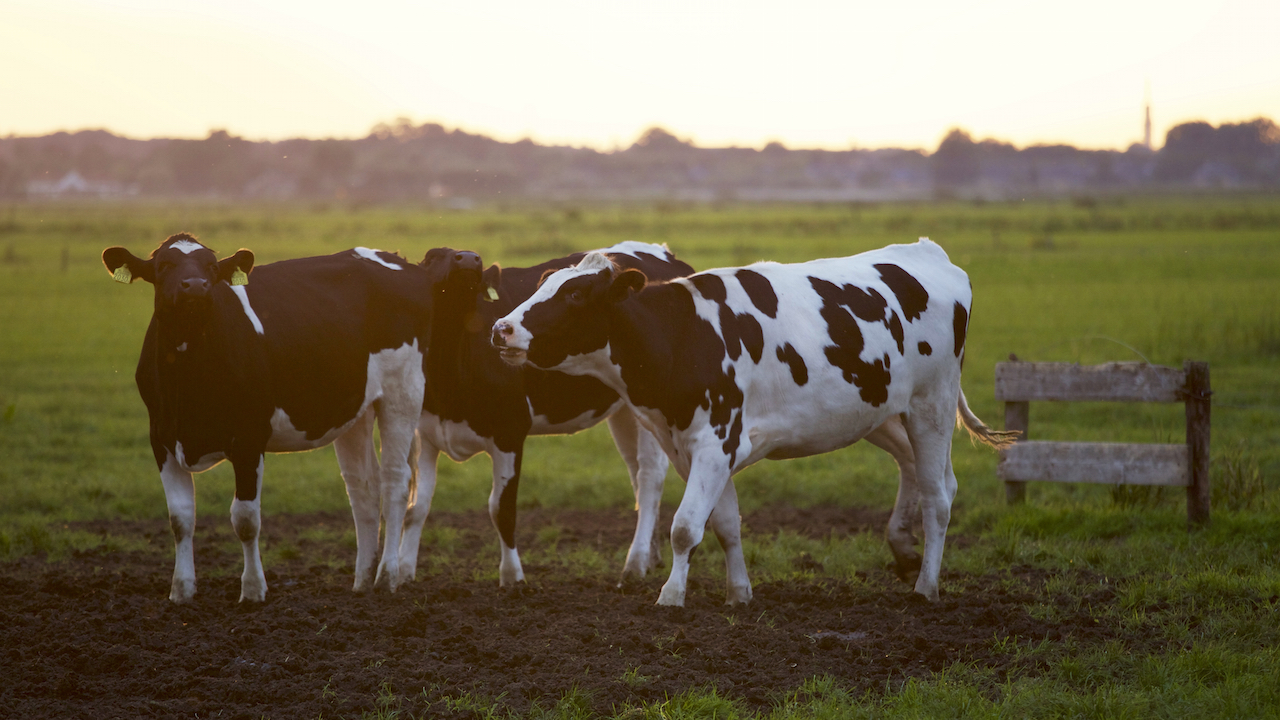
Harvard Looks into Scaffolding
Researchers at Harvard University published a paper about developing a cell-based meat scaffold made from gelatin. Scaffolding provides the structural support to cells by outlining the composition and shape of cell-cultured meat. This is important to make sure that the cells grow into muscle fibers that have the same taste, texture, and shape as conventional meat. And that’s what the scientists set out to investigate.
Using pig-derived gelatin, the Harvard researchers made thin strands of gelatin similar to muscle fibers using a device similar to a cotton candy machine. To investigate if if cells could grow on it, the researches added both cow and rabbit cells to the scaffold to grow. According to the researchers, the cells successfully grow on the scaffold and the resulting product had a similar texture profile to conventional meat.
Developing an appropriate scaffolding is one of the major obstacles that the field needs to address to scale production. Could animal collagen, developed in devices like cotton candy machines, be a method to establish a scaffold for cell-based meat companies?
Ginkgo Bioworks Raises $350M Ferment Fund
Ginkgo Bioworks, a major synthetic biology company based in Boston, Massachusetts, announced its $350 million Fermentation Fund to invest in spinout ventures using its biotechnology platform. In March 2019, Ginkgo announced its spinoff company Motif FoodWorks to use Ginkgo’s microbe platform to produce animal proteins to complement the flavour and texture of plant-based products. Motif may also use their cell-grown animal proteins to enhance the taste of cell-based meats and other cell ag products. To start, Motif FoodWorks announced that they raised a massive $90 million in their Series A round of funding. This the largest Series A round ever for a foodtech startup. In August, Motif raised an additional $27.5 million in a Series A extension round.
Will we see more spinouts from Ginkgo Bioworks like Motif FoodWorks working on the future of food?
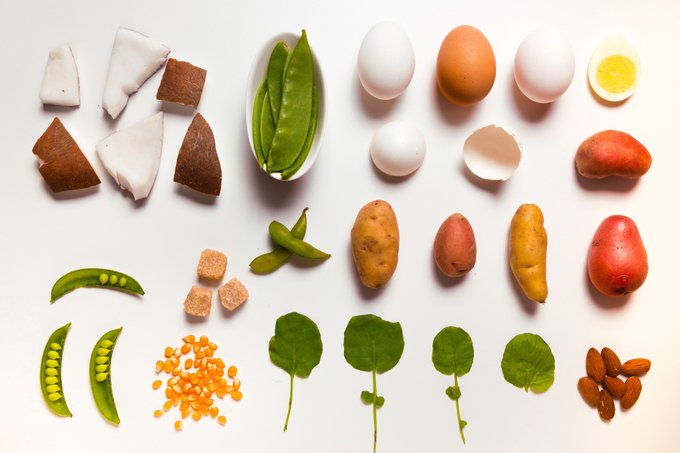
Conclusion
50 years ago, Apollo 11 landed on the moon. 20 years ago, NASA first funded research about growing meat outside of animals for astronauts in space. Now, companies like Aleph Farms have shown it is possible to grow cell-based meat in outer space. And on earth.
At the same time, with many obstacles to overcome, including regulatory hurdles, there is still time before cellular agriculture becomes the future of food. Yet, with continuous research and investments progressing the field, we can only wait to see what the next frontier will be for cellular agriculture.
Stay connected with CellAgri
Join our mailing list to receive the latest news and updates weekly from the cellular agriculture industry. Your information will not be shared.





